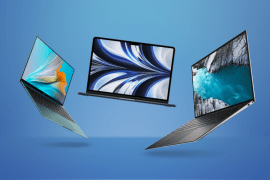Asus ROG Zephyrus review – in pictures
Game away on my Zephyr...
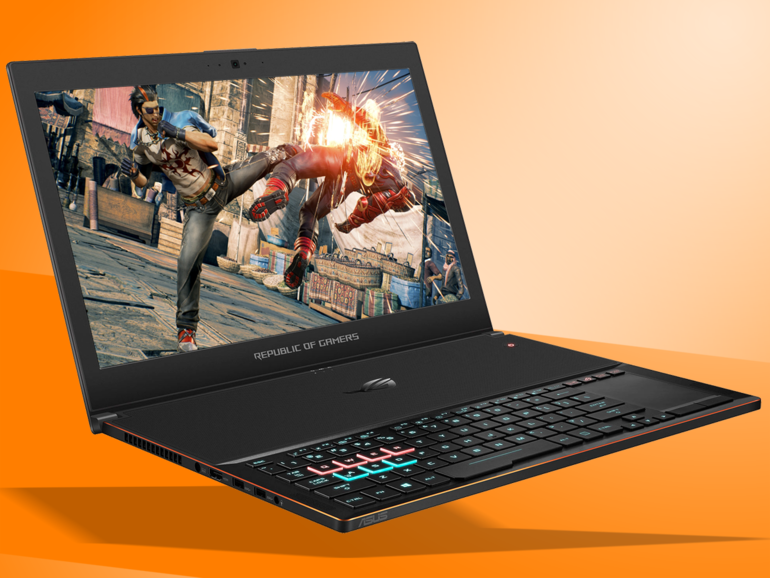
Asus ROG Zephyrus review – in pictures
Thin. Quiet. Powerful. The holy trinity of gaming laptops. It used to be a pipe dream – either you had a skinny, silent machine that struggled with anything more demanding than Solitaire, or you had huge, bulky machines with powerful GPUs – and fans that sounded like a hurricane to keep them cool. The Zephyrus is one of the first machines we’ve seen that doesn’t just break that trend. It smashes it into teeny tiny pieces. 17mm thick. 2.2kg. But somehow with an Nvidia GeForce GTX 1080 graphics card that put it practically on par with a desktop PC. How? Well, it’s apparently thanks to space rockets. Yes, really.
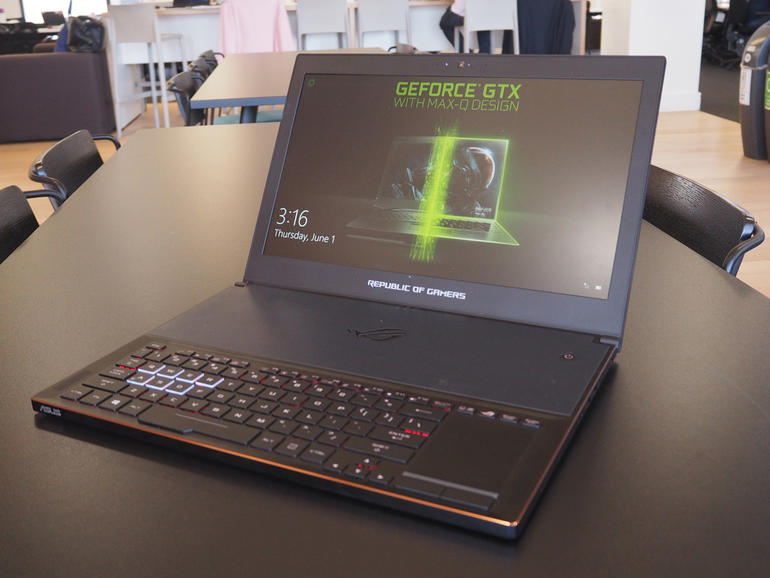
ASUS ROG ZEPHYRUS DESIGN: MAX EFFICIENCY
The Zephyrus follows Nvidia’s Max-Q design, which (scientifically) is the point where aerodynamic stress on a space rocket is at its maximum, so you can dial down the thrust and still break out of the atmosphere. But we’re talking about laptops, not rockets. Here, it’s an attempt to maximise efficiency out of the graphics card, instead of going for all-out performance. That way you avoid diminishing returns, and squeeze the most amount of power out of something that’s still thin and light enough to take on the move.
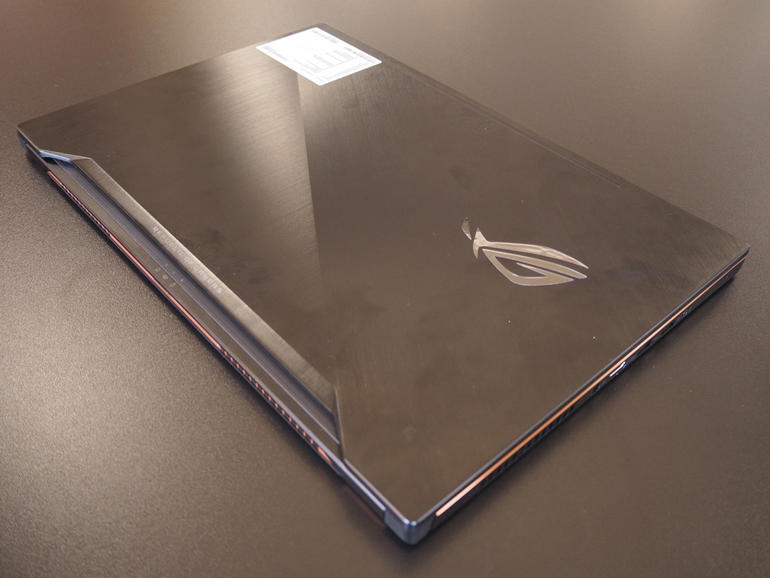
ASUS ROG ZEPHYRUS DESIGN: LIGHT NOT LITE
In fact, the Zephyrus is so thin you can lift it with two fingers, and will fit in a regular backpack like it’s a copy of the world’s best gadget magazine. It also looks as good, if not even cooler. The black and copper scheme translates into a stunning laptop that somehow still has an air of maturity to it – even with all the red highlights.
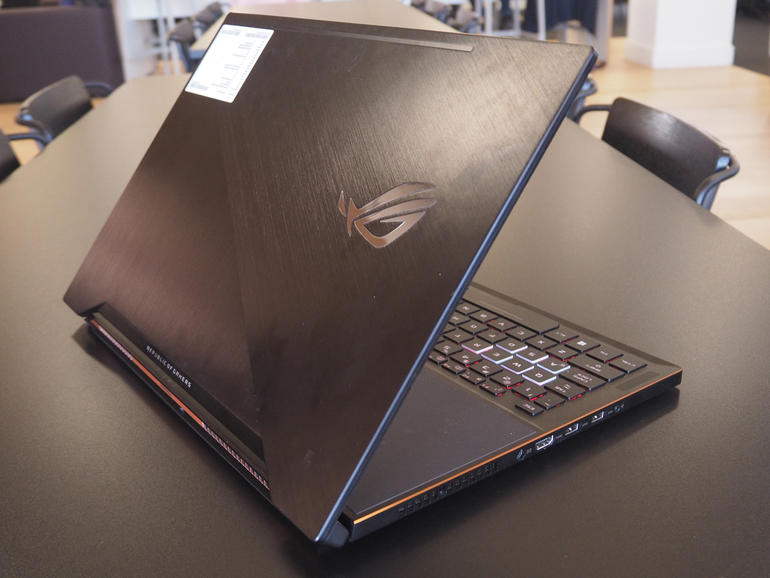
ASUS ROG ZEPHYRUS DESIGN: READY FOR BUSINESS
The black and copper scheme translates into a stunning laptop that somehow still has an air of maturity to it – even with all the red highlights. There’s no doubt it has gamer DNA, but it wouldn’t look out of place in a business meeting. We even like the chamfered edges around the keyboard, which help reduce wrist strain while you game for hours on end. Acer’s Predator Triton doesn’t have these, which can leave your wrists aching after a particularly intense gaming session.
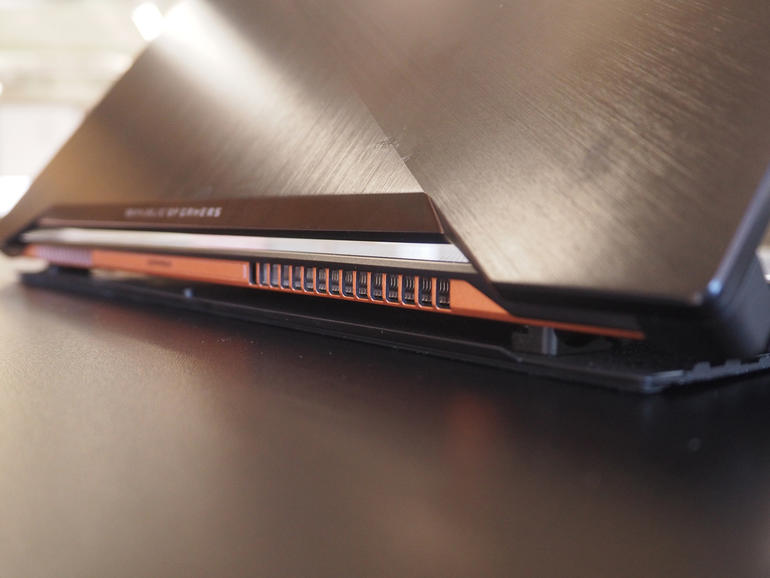
ASUS ROG ZEPHYRUS COOLING: CLEVER
Keeping the graphics card from cooking itself wasn’t just a case of adding more air vents until the Zephyrus has more holes than a colander. Instead, it has a party trick: active cooling. Open the screen and a hinge pops open at the back, raising the laptop by another 6mm and leaving plenty of room for air to escape the chassis. It’s a really neat design, and one that’ll mean you can game all day without overheating. The plastic panel is pretty flimsy, though, and feels cheap in an otherwise premium laptop. It bends to the slightest of pressure applied by your finger, and can collect dust when the laptop is left open at idle.
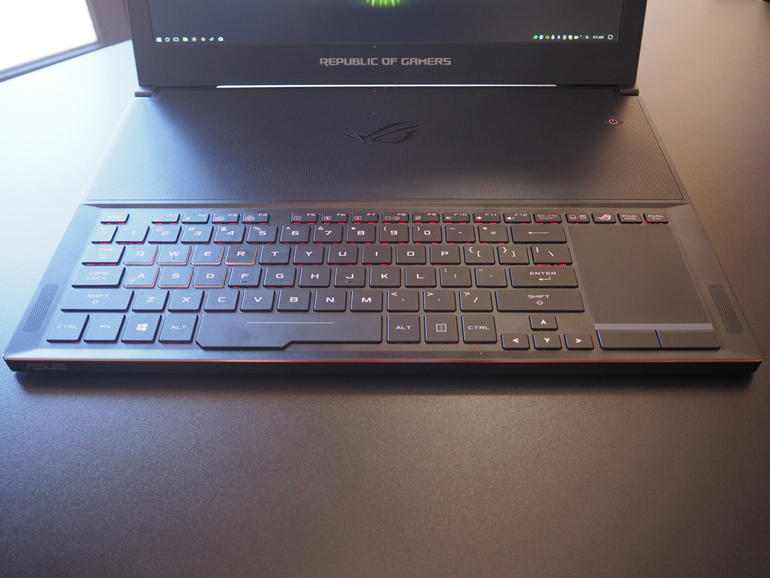
ASUS ROG ZEPHYRUS KEYBOARD: ONE-SIDED
Asus has also shifted the backlit keyboard towards the front edge of the laptop to make room for more cooling, bumping the touchpad over to one side so the entire back half of the machine is free to draw air in through the top and sides, before exhausting it out of the back. The lack of anywhere to lean your mitts might take some getting used to, but it wasn’t as uncomfortable to use as we were expecting. It has a fairly shallow 1.4mm of travel, but the keys are spaced out quite well so anyone with boat paddles for hands can game comfortably too.
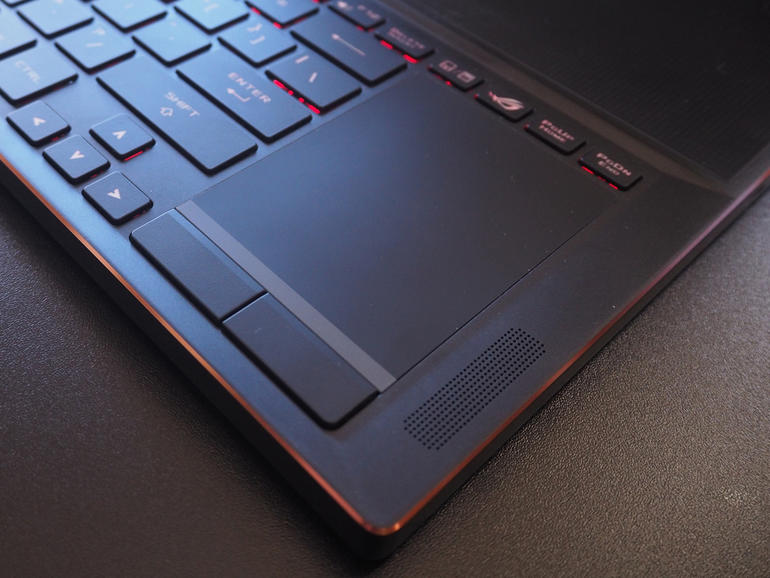
ASUS ROG ZEPHYRUS TOUCHPAD: DOUBLE DUTY
The bundled wrist rest might help if you were planning to use one to write a novel, but for gamers, it’ll easily get the job done. As for the touchpad, it lights up into a number pad with a tap of your finger, which is handy. It’s fine for getting around Windows, but serious players will want to plug in a mouse post-haste.
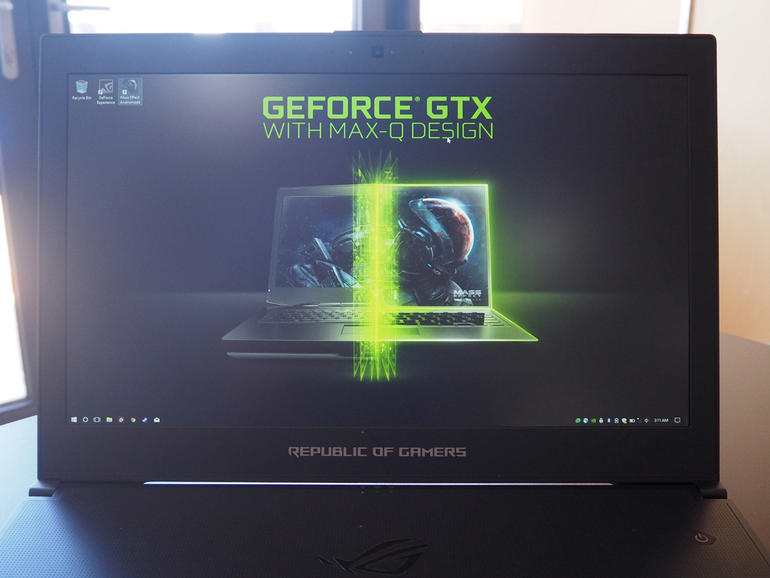
ASUS ROG ZEPHYRUS SCREEN: FAST & BRIGHT
As you’d expect, the 15.6in display is gaming-grade, too. Asus has kept the resolution down to a sensible 1080p, which means the GPU can put its power to good use in games. It’s a G-Sync panel as well, with a 120Hz refresh rate. That makes it perfect for games that rely on quick reflexes. Of course, if you want more pixels, you can plug it into a 4K telly and the GTX 1080 will still be able to cut the mustard. It’ll handle HDR over HDMI 2.0, too, although the screen itself can’t manage all that extra dynamic range. Colours look rich, but don’t overdo it, so you get images that are natural yet vibrant.
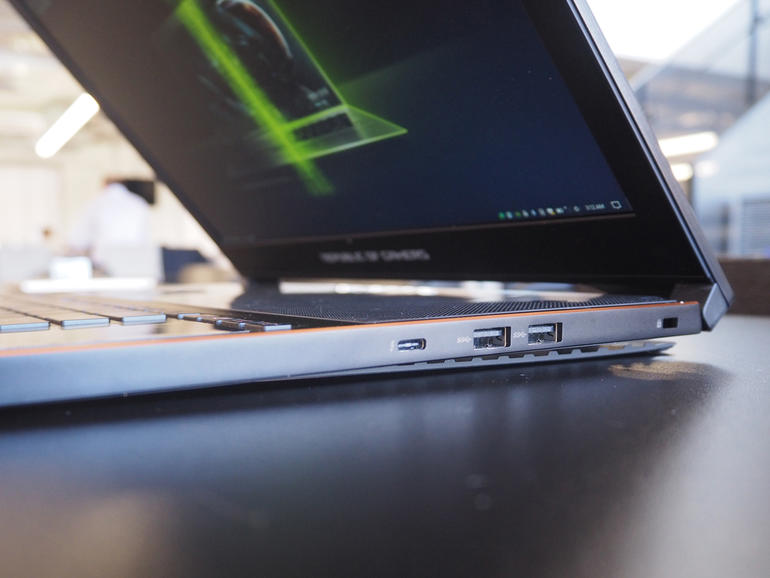
ASUS ROG ZEPHYRUS PORTS: NO ETHERNET
There’s plenty of room around the sides for connectivity, despite the skinny dimensions. You get multiple USB ports, including USB-C, a 3.5mm headphone jack, and an HDMI video output. No wired Ethernet, though – which seems like a missed trick. Serious gamers don’t do Wi-Fi, do they?
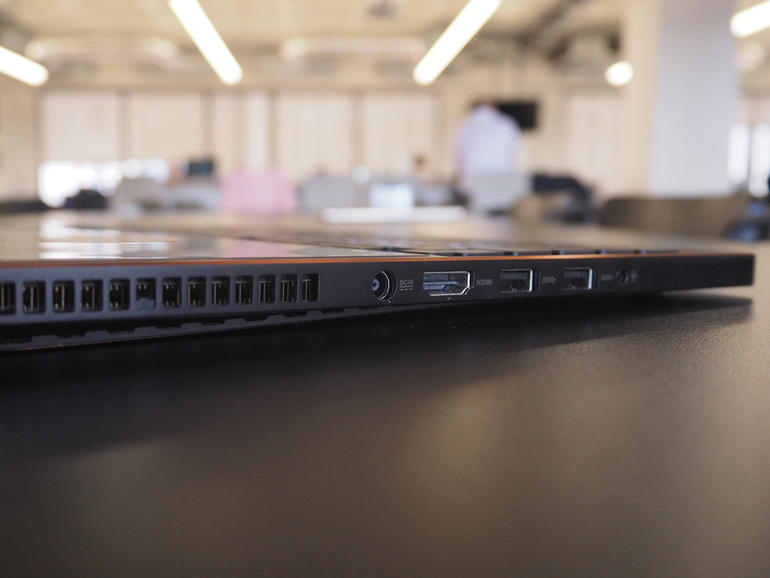
ASUS ROG ZEPHYRUS PERFORMANCE: POWERFUL
Underneath, though, the Zephyrus is every bit the monster machine. As well as the GTX 1080 (which has 8GB of dedicated video RAM), the top-spec version has a 7th generation Intel Core i7-7700HQ processor, up to 24GB of RAM, and four M.2 PCI ports for super-fast SSD storage. So yeah, it’ll play anything you can chuck at it – including VR. We got a score of 13,887 on the Fire Strike benchmark and 7531 on the Fire Strike Extreme tests – whereas the slightly faster Acer Predator Triton managed to pull off a cool 13,972 and 7643 respectively.
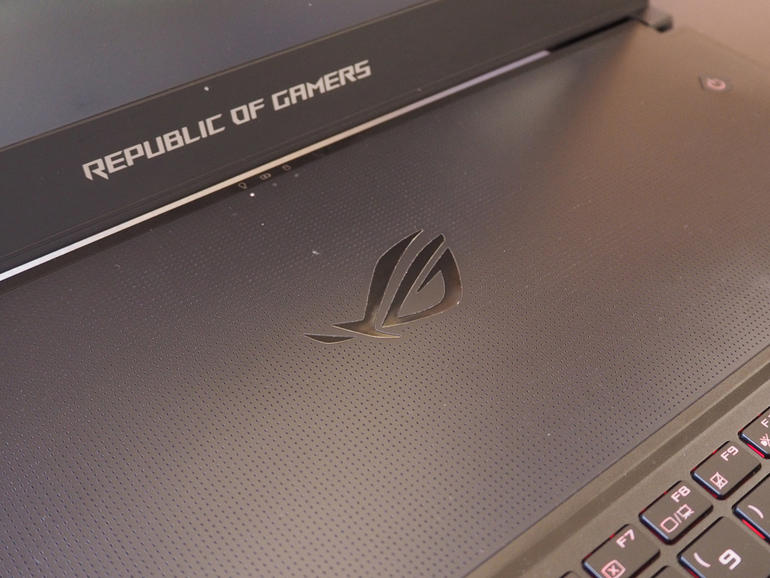
ASUS ROG ZEPHYRUS BATTERY LIFE: LIMITED
However, load up the big games and the Zephyrus hardly breaks a sweat – Resident Evil VII, GTA V, Tekken 7 and Hellblade all run flawlessly, with FPS levels not dipping below 80 with everything set to Ultra. There’s virtually no stuttering or judder, even at those high settings. There is a battery squeezed in around all those high-performance parts, but don’t expect to get very much life out of it away from the mains.
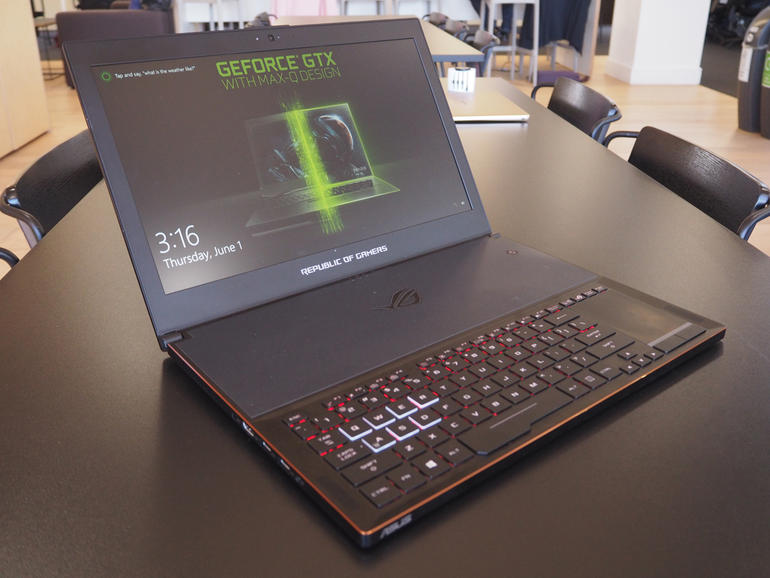
Gaming laptops that you could comfortably carry away from a desk have been a long time coming – and the Zephyrus is the closest yet. It’s a great gamer that manages to play just about everything you can throw at it with flying frame rates, but somehow also stays cool and quiet thanks to a clever combination of design and hardware optimisation. The understated and mature looks make us take it that little bit more seriously, the no-nonsense touchpad is actually functional, and although the keyboard position will feel a bit marmite to some, it makes sense once you clock up some serious gaming time. Sure, it’s expensive (around £2500/$2500), but if you want the absolute best combination of performance and portability, the the Zephyrus takes some beating.
